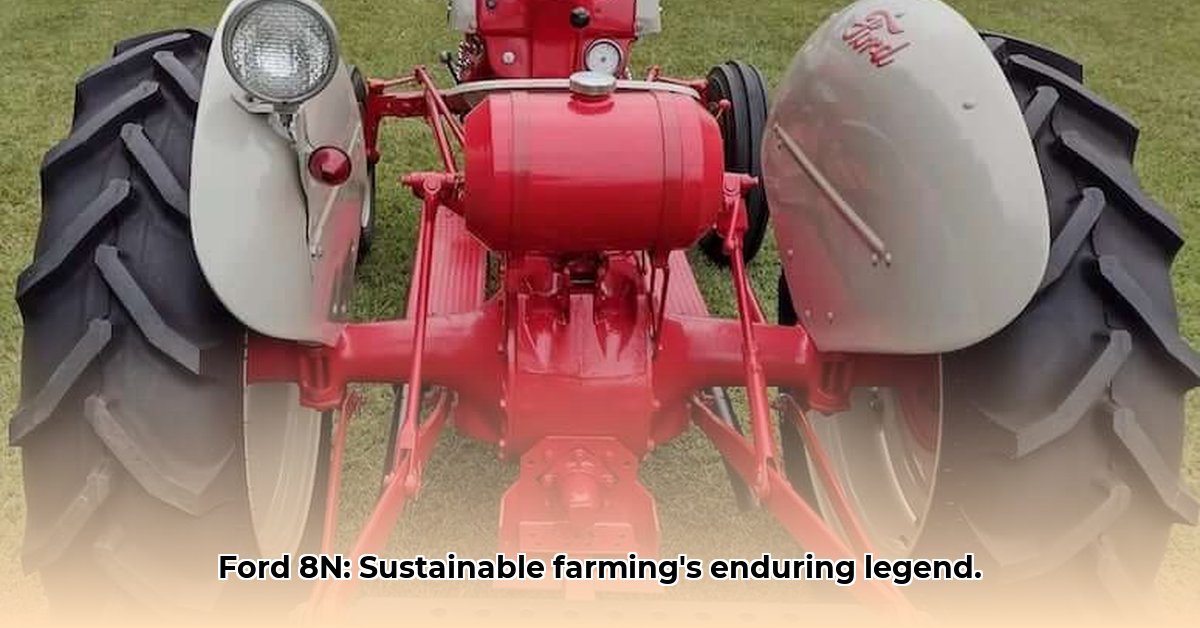
The Ford 8N tractor. The name alone evokes images of hardworking farmers, sun-drenched fields, and the rhythmic chug of a powerful engine. But beyond the nostalgia, what's the real story behind this iconic machine? This isn't just a dry recitation of specs; we'll explore the 8N's history, its impact on farming, and its surprisingly relevant role in modern, sustainable agriculture. For more in-depth information, check out this detailed 9N resource.
Power and Performance: Beyond the Horsepower
The heart of the 8N was a 2.0-liter, four-cylinder engine – a simple yet remarkably reliable power plant. Determining the exact horsepower is tricky; early measurements weren't standardized, resulting in variations depending on the source. While advertised horsepower figures may fluctuate, it's crucial to remember that the 8N was designed for dependable work, not speed. It was a steadfast workhorse, delivering consistent performance for the demands of its time. Its power output, while modest by today's standards, proved sufficient for many common agricultural tasks. Was its straightforward design a contributing factor to its long-term success?
A Detailed Look at the 8N's Features
The Ford 8N's enduring appeal extended beyond its engine. Its robust construction, straightforward mechanics, and relatively simple maintenance procedures contributed to its legendary status, making it a favorite among vintage tractor enthusiasts and modern small-scale farmers alike.
| Specification | Value | Additional Notes |
|---|---|---|
| Engine | 2.0L, four-cylinder | Simple design translated to fewer potential points of failure and easier repairs. |
| Power (Claimed/Estimated) | Varied; depends on source | Early horsepower measurement lacked standardization; expect variations. |
| Transmission | Three-speed manual | Simple, yet effective for its intended applications. |
| Weight | Approximately 2,600 lbs | Influenced traction and potential for soil compaction; a key consideration for sustainable practices. |
| Hydraulics | Limited capacity | A notable difference from the advanced hydraulic systems found in contemporary tractors. |
| Fuel Consumption | Relatively high by today's standards | A crucial factor for modern farmers prioritizing fuel efficiency and minimizing environmental impact. |
| Size and Dimensions | Compact and maneuverable | Ideal for smaller fields and confined spaces. |
The 8N and Sustainable Farming: A Nuanced Perspective
This is where the narrative becomes particularly compelling. How does a mid-20th-century tractor fit into the discussion of sustainable agriculture? The answer is multifaceted. The 8N's exceptional longevity and ease of repair significantly reduce waste compared to modern tractors with planned obsolescence. While sourcing parts might be challenging, resourceful owners frequently share components or even fabricate replacements using 3D printing techniques. This inherent repairability stands in stark contrast to the disposal challenges presented by many contemporary agricultural machines. However, the 8N's fuel inefficiency, resulting in increased fuel consumption and a larger carbon footprint, is a critical counterpoint. Furthermore, its weight can contribute to soil compaction, impacting long-term soil health. Thus, evaluating the 8N's sustainability involves considering both its positive attributes and its inherent limitations. Is the 8N’s legacy as a champion of longevity outweighed by its comparatively high fuel consumption?
The Enduring Legacy: Simplicity, Durability, and Modern Relevance
The Ford 8N's specifications tell a compelling story—a story of a machine that was revolutionary for its time but falls short of ideal modern sustainability benchmarks. While its fuel efficiency and potential for soil compaction are drawbacks, its robust design and ease of maintenance make it surprisingly relevant today. This resilience, this ability to endure decades of use and be kept operational through ingenious repairs, testifies to thoughtful engineering and a commitment to building machines for longevity. Its enduring appeal serves as a reminder that simplicity and durability often overshadow fleeting technological advancements. The 8N stands as a symbol of a bygone era, demonstrating that sometimes, the most straightforward tools endure the longest. This enduring appeal continues to resonate with farmers and mechanics, proving that simplicity and durability often trump fleeting technological enhancements. Does the 8N's enduring popularity suggest a broader shift towards sustainable practices in agriculture?
Key Takeaways:
- The Ford 8N's durability and adaptability position it as a valuable asset for sustainable farming practices.
- While its lower fuel efficiency and horsepower present challenges, these can be addressed through strategic planning and supplementary tools.
- The integration of mechanical weed control and other soil-friendly cultivation methods are central to using an 8N sustainably.
- The 8N represents a return to more traditional, potentially more sustainable, farming techniques.